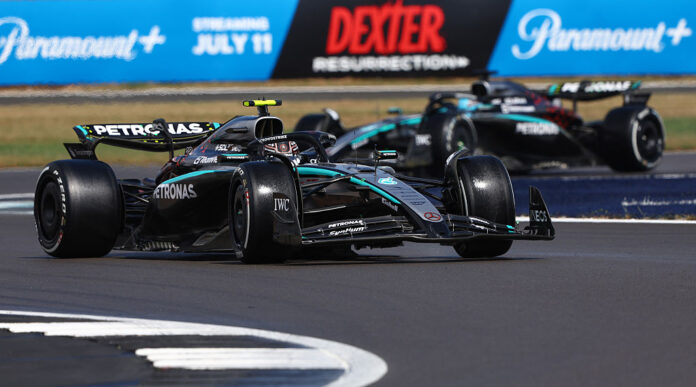Mercedes is investigating why a suspension upgrade introduced at the start of the European season hurt its competitiveness, after removing it at the Hungarian Grand Prix.
George Russell finished third in Budapest to score the team’s first podium in Europe this season, along with a victory and podium in Canada. Team principal Toto Wolff believes the result in Montreal actually led to Mercedes leaving the suspension on the car longer than it should have, and that the performance enjoyed in Budapest shows the car is more predictable in its previous configuration.
“I think that we tried to solve a problem with a mechanical upgrade [at Imola in May],” Wolff said. “And that may or may not have not solved an issue but it let something else creep into the car and that was an instability that basically took all confidence from the drivers and it took us a few races to figure that out.
“Obviously also misled a little bit by the Montreal win – we think maybe that’s not so bad and [eventually] we came to the conclusion it needs to come off. It came off, and the car is back to solid form.”
Wolff admits the situation is concerning for Mercedes as it shows a lack of correlation between its simulation tools and reality, having had such a major unexpected impact on the car’s characteristics.
“Upgrades are here to bring performance and there’s a lot of simulations and analysis that goes into the parts of the car, and then they’re just utterly wrong and you need to go back to the analog world and put it on the car and see what it does and if it doesn’t do what it should do,” he said. “And that’s a tricky bit, I guess, for everyone in Formula 1 – how do you bring correlation from what the digital world tells you into the real world? And that has been a feature and this is the last example of how it tripped us up.”
Explaining the impact of the change in more detail, trackside engineering director Andrew Shovlin says the suspension issue can be used to improve Mercedes’ understanding of developments it makes with its 2026 car.
“If we make a new suspension, we’re doing it to make the car go quicker,” Shovlin said. “And clearly, there’s something that wasn’t right. There’s areas that the drivers said the car was definitely better with that suspension. But when it came to stability in the fast corners, some of the corners where they’re having to carry a lot of speed on entry, they didn’t have confidence to push the car like they would like to.
“So, we’d always try and make things that improve the pace of the car. This didn’t. A lot of the work that’s going on now is to understand exactly what caused that problem.
“It’s not something that was dead obvious, otherwise we wouldn’t have had the issue in the first place. But there’ll be a lot of learning in there. Some of it will benefit us this year. But importantly, it’ll benefit us for the future.”
